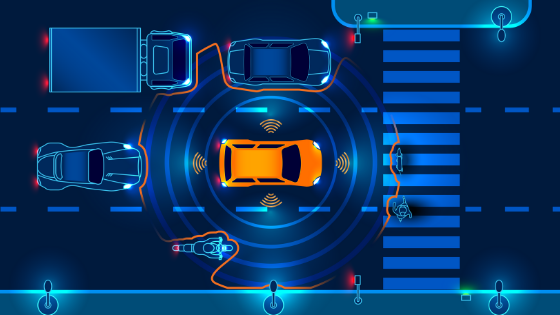Once upon a time, the idea of driverless cars was the stuff of science fiction. Sure, Hollywood could come up with cool effects for futuristic movies, but there was no way it would happen in real life.
Now, driverless cars aren’t an idea of the future. They’re already happening – Uber has driverless cars already on the street.
The question isn’t whether driverless cars are possible. The question is whether they’re safe, from a driving and a security perspective.
Safety Benefits
Autonomous cars were designed with a certain purpose in mind.
Humans are remarkable, but at the end of the day, there’s only so much we can do. Even people with all of their faculties intact at the prime of their health can make mistakes. We’re not carbon copies, either – some people have more limitations to overcome.
The biggest benefit of autonomous vehicles is that we can overcome these limitations to the benefit of our own safety.
Those Who Can’t Drive
Let’s say, for example, that you’re unable to drive. This applies to more people than you think, whether it’s due to old age or disability.
That said, we still need to travel. Worse, not everyone lives in an area with public transportation. New York City is one thing, but there are no subway lines in North Dakota or Utah.
Autonomous vehicles grant people who can’t drive a new level of freedom. Before self-driving cars, those who couldn’t drive had to rely on caretakers, friends, or family to get around. Now, they could simply get a car that drives itself and travel at their own discretion.
Eliminating Human Error
Humans are incredible creatures. Our brain maintains our heart rate and breathing while we think about quantum physics or what to order for lunch.
But the fact is, humans get tired. We also get irritable, or stressed, or rushed, or all of the above.
The benefit of autonomous cars over humans is twofold.
First, unlike a human, a computer doesn’t get tired. The system can wear out, but routine preventative maintenance should catch wear and tear before it becomes a real issue.
A human needs to sleep and eat. Humans have emotions. Computers don’t get stressed about missing that light. They don’t worry about their morning meeting or their kids’ appointment with the principal. All they’re worried about is driving a car.
Second, computers can see and process more than humans.
The human brain is always processing, even if your eyes don’t consciously see something. The problem, of course, is the gap between conscious and subconscious processing. If something doesn’t pass your threshold, you could make a critical error.
A computer doesn’t have a gap between conscious and subconscious processing. It can also sense far more than a human thanks to sensors and a significantly greater capacity to process multiple streams of information at the same time.
Security Risks
For all the benefits of self-driving cars, however, there are a few key security risks.
Computers might be able to process huge sums of information. But unlike humans, computers can be hacked. After all, they’re machines that rely on code.
And just like any other computing device, self-driving cars can be hacked.
Let’s say, for example, that a hacker wants to leverage ransom from you. They could hack the supercomputer in your pocket, but they could also hack your car. It doesn’t matter whether you’re in or out of the car, or whether or not the car is in motion.
Once the system is hacked, you’re no longer in control. And since a hacker took control of your car and not your smartphone, they can threaten your safety if you’re unwilling to comply.
Then again, a hacker may not need to ransom you. They could hack into your car to steal personal information, like your location, with the intention of robbery or assault.
Stay On Top of Safety Issues
So far, there have not been instances of hacking in relation to self-driving cars. Then again, self-driving cars are not widespread yet, and most self-driving cars are used by companies like Uber and don’t have a direct connection to the rider’s information.
The fact that it hasn’t happened yet doesn’t make it impossible. After all, self-driving cars were long considered impossible. And if self-driving cars are going to be utilized, they have to be viewed as a whole entity: benefits and risks together.
